Sciatica is the pain that the sciatic nerve causes. Sciatica is felt all through the body’s parts where the sciatic nerve branches – from the lower back through your hips and down each leg. It can be caused by a herniated or slipped disk, a compression, irritation or inflammation of the sciatic nerve. Sciatica flares up at night because the affected nerve can get compressed when we lay down. Your sleeping position is the obvious culprit. To avoid triggering sciatic nerve pain in bed, find out more about how to sleep with sciatica below.
In this guide, we discuss how to sleep with sciatica by touching upon the best sleep positions to limit nerve pain while relieving tension. And don’t worry – we don’t expect you to change the way you sleep right away! We’ll share tips on how you can continue to be comfortable in your natural sleep position by leveraging tools and sleep aids such as pillows and bolsters.
How To Sleep With Sciatica
- Elevate your legs »
- Use support pillows »
- Choose a mattress with good support »
- Sleep in an adjustable bed or recliner »
- Try magnesium supplements or spray before bed »
What Side Should I Sleep On With Sciatica?
Sciatica can affect either side of your body, so choosing the best sleeping side depends on where your pain is located. Sleep on the side that doesn’t give you pain to prevent further aggravation to the injury site. In general, the best and safest sleeping position for sciatica is on your back. When sleeping in this position, the body is completely relaxed, and there isn’t any tension on the lower back.
Best Sleeping Position for Sciatica
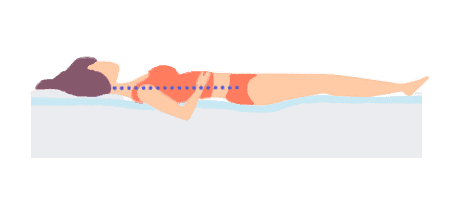
Back Sleeping: Best Sleeping Position for Sciatica
Sleeping on the back puts the spine in a neutral position and relieves tension around the nerve’s location. For ultimate pain relief, lie on your back, lift your knees and place a couple of pillows beneath until you feel comfortable. A soft pillow under your lower back and neck will release pressure from your joints and nerves. If you don’t feel comfortable, you can place cushions under your arms too.

Side Sleeping: Good for Sciatica
It’s harder for side sleepers to learn how to sleep with sciatica. You’re not lying on your back, so there isn’t any pressure on the spine, discs, or nerves. But you might strain your spine out of alignment. Lie on your painless side, curl your knees at a 90-degree angle, place a pillow between your legs, under the neck, and have a spare for under the arms if they feel uncomfortable.

Stomach Sleeping: Worst Position for Sciatica
Sciatica is a nightmare for stomach sleepers. Lying on your stomach puts the spine into an unnatural position and increases the stress on your joints and lower back. It can cause discomfort, more pain, and damage to the sciatic nerve. Sleeping on your stomach is not the right choice because it puts pressure on your shoulders, neck, and sciatic nerve.
How to Sleep With Sciatica
Option 1: Elevate your legs
If you’re struggling to stay comfortable while lying down, try elevating your legs. Back sleepers can use a wedged cushion or simply bend their knees to elevate their legs for added comfort.
Place heels and back on the mattress, elevate the knees towards the ceiling, and place cushion underneath. You’ll be amazed by how comfortable this can feel.
Elevating your legs when sleeping with sciatica is recommended for back sleepers with sciatica. The angle at which you bend your knees helps release lower back tension and therefore prevent nerve pressure.
Option 2: Use support pillows
Soft cushions are ideal for back sleepers to put under their lower back and knees, while knee pillows are better for side sleepers to put between their legs.
You can wedge yourself with support pillows to avoid rolling over in the night. Body pillows are great for side sleepers to keep their body aligned.
Support pillows are the best accessory when you’re learning how to sleep with sciatica. Resting you feet or knees on pillows can help release pressure from the sciatic nerve and keep the spine in perfect alignment.
Option 3: Choose a mattress with good support
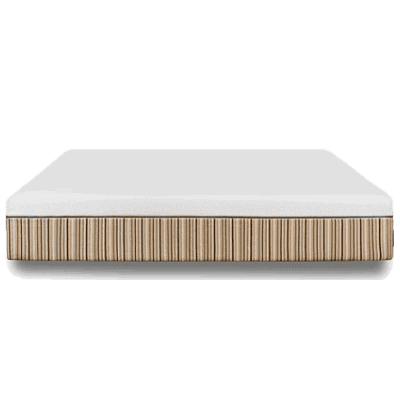
If using pillows only provide temporary relief, you should consider swapping out your mattress. A mattress that has lost its support is detrimental for spine health.
A firm mattress can be great for back sleepers since it supports the spine, but may not feel as good for side sleepers. Side sleepers require a medium-firm bed to allow for mild shoulder and hip cushioning that alleviate joint and spine pressure. Stomach sleepers should looks for mattresses with zone support.
Depending on your preferred sleeping position, there are different mattress firmnesses to help you with sciatica. The mattress has to keep your spine well-aligned during the night to decrease pain. You can read more about the best mattress for sciatica here.
Option 4: Sleep on an adjustable bed or recliner
Even with the best mattress, a severe case of sciatica might make lying flat on a mattress a nightmare. If you’re wondering how to sleep with sciatica with most options exhausted, the good news is we still have a few tricks up our sleeve.
You can try sleeping on a recliner or adjustable bed. Sleeping on an incline can be a great solution since it helps your body get positioned at 30° to 45° incline or the zero gravity position, releasing tension in your lower back.

When suffering from severe sciatica, you know how comfortable a position of slight incline can be. Sleeping on adjustable bed or a recliner can be a more permanent solution to alleviate tension and relief compression on the sciatic nerve.
Option 5: Try magnesium supplements or spray before bed
You may not know it but you probably have a magnesium deficiency; almost every human has, especially women. Having a magnesium deficiency can compound your sciatic pain and make it feel even worse.
Try taking the supplement or use a topical spray every night before sleep to relax your nerve system and mildly reduce the sciatic pain and tightness. Consult your doctor about additional supplement recommendations.
Magnesium is a well-known supplement used by pro athletes and olympians to soothe pain and relax muscles. Taking it as a supplement or using a topical spray on the affected area promotes pain relief and helps with better sleep.
Back Sleepers – How to Sleep With Sciatica
Types of Pillow for Sciatica
Leg Elevation Pillow
A leg elevation pillow helps reduce pressure on the lumbar spine. There are great ones on the market that will help you adjust on how to sleep with sciatica. Just stack regular pillows or use a wedged style cushion. You have to determine the level of elevation that’s most comfortable to you and eases your sciatic pain.
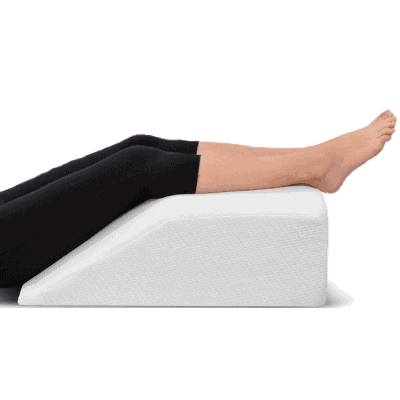
Types of Mattresses for Sciatica
Latex Mattress
Latex is a naturally firm material, so a latex mattress is ideal for back sleepers with sciatica. It doesn’t sag or bend, so it helps keep your spine aligned. It releases tension and keeps your whole body relaxed. Latex mattresses don’t trigger your sciatica and ensure support to your shoulders, knees, and hips.
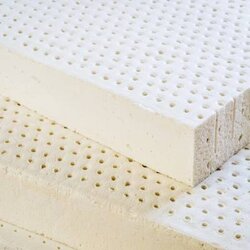
Hybrid Mattress
A hybrid mattress is a combination of at least two materials. Usually, the base is made of pocket coils, while the top comfort layer is memory foam or latex. Latex hybrid mattresses are more responsive, firm, and offer better pressure-point support. Memory foam hybrid mattresses contour the body and provide a cradling feeling that can be beneficial for heavier back sleepers with sciatica.
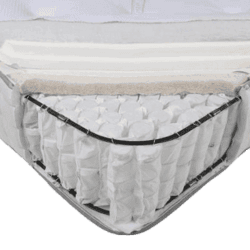
Side Sleepers – How to Sleep With Sciatica
Types of Pillow for Sciatica
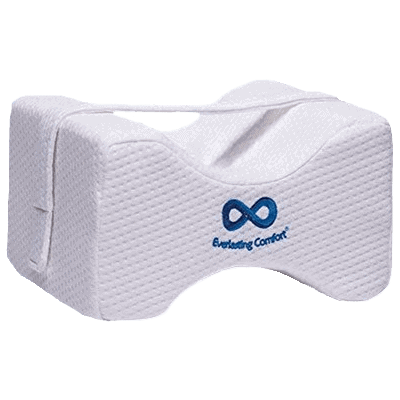
Knee Pillow
Using a knee pillow between your legs will lessen the stress on your spine. A contoured knee pillow helps your body support the spine’s natural curve, therefore releasing tension from the sciatic nerve. Sleeping without a knee pillow causes your knees to collapse inward, and your upper leg pulls your spine out of alignment.
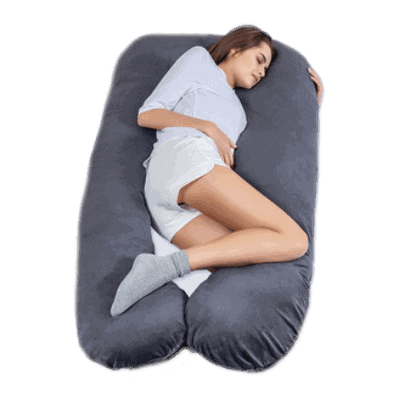
Whole Body Pillow for Sciatica
Whole-body pillows offer full-body support from your feet to your neck, making them an excellent choice for sciatica sufferers. The full-body support keeps your cervical spine aligned and eases your pain. These pillows stay in place even if you toss and turn. Body pillows are bulkier; if you share your bed with a partner, it might not be suitable.
Types of Mattresses for Sciatica
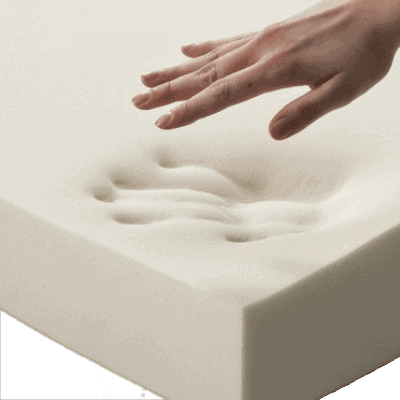
Memory Foam
Side sleepers with sciatica unite – memory foam mattresses are your answer on how to sleep with sciatica. They are great in carrying the weight of side sleeping, loosening tension in your shoulders, hips, and knees. You won’t have to worry about pain in your pressure points. Memory foam mattresses cushion your body, giving you a snuggly feeling while reducing pressure and providing ultimate comfort.

Hybrid Mattress
A hybrid mattress made with a memory foam top layer can also help with sciatic pain in side sleepers. The difference between a memory foam mattress and a memory foam hybrid is that the hybrid has a pocketed coil base that will ensure more stability and better support. It’s responsive and contouring at the same time.
Stomach Sleepers – How to Sleep With Sciatica
Types of Pillow for Sciatica
Adjustable Fill Pillow
A fill pillow is adjustable according to your needs. You can regulate the level of filling to suit the position in which you’re using the pillow. Add more filling to make it plumper or take some out to make it flat. For stomach sleepers, positioning a flat pillow under the pelvis or as a neck support is recommended.
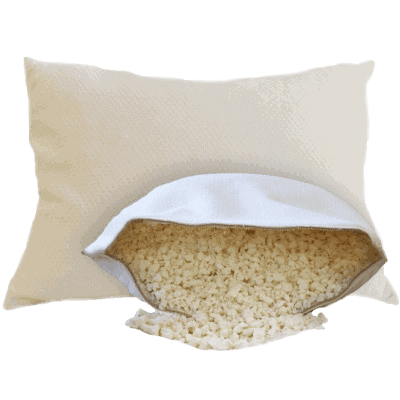
Types of Mattresses for Sciatica
Zoned Mattress
If you don’t want to give up sleeping on your stomach, even with sciatica, you need a zoned mattress. They’re designed to provide targeted pressure relief in your shoulders and additional support for your lower back. It’s separated into many zones but mainly targets three regions – hip, waist, and shoulder area, and each of them has a different density to allow maximum comfort and distribute weight evenly.
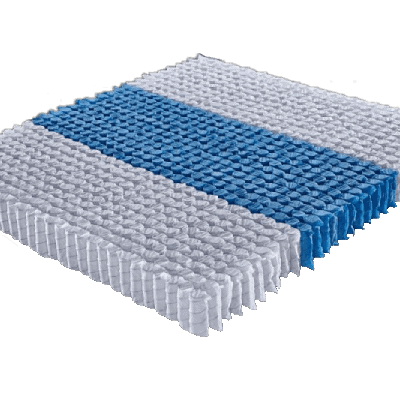
FAQs
Why Is My Sciatica Worse When I Lie Down?
Lying down can cause you pain because your position either puts pressure on your sciatic nerve root, curving the spine, or pinches the nerve. The pain you feel when you lie down mainly depends on your bed and sleeping position. A side position can tilt your hips too far on the side, disturbing the spine alignment and pinching the nerve. It’s essential to learn how to sleep with sciatica to avoid shooting pain each night.
Does Sleeping On The Floor Help Sciatica?
Some people will tell you they’ve tried everything and have resorted to sleeping on the floor to lower their sciatic pain. It sounds logical since a softer surface bends your spine and causes nerve impingement. But there’s no evidence that the floor is a practical choice. Before you resort to sleeping on the floor, try firm mattress like one made from latex. Firm mattresses alleviate sciatic pain by supporting your back.
Can Sciatica Affect Your Sleep?
In short, yes. Lying in bed at night can cause shooting pain through your back and leg and make it impossible to fall asleep. Even if you find a comfortable position, a simple turn in the middle of the night might cause you to wake up in pain. Learning how to sleep with sciatica is the best way to overcome it. You can incorporate support pillows, use a mattress with good support or even train yourself to change your sleep position to reduce pain.


